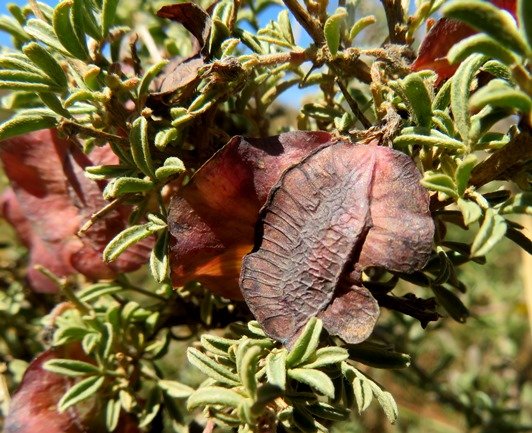Wiborgia sericea

Author: Ivan Lätti
Photographer: Thabo Maphisa
Wiborgia sericea is a spreading or erect shrub growing rigid, straight branches that reach heights from 30 cm to 1,2 cm. The young stems are silky hairy, the old ones covered in grey bark.
The leaves are digitately trifoliolate, leaflet size and shape variable from oblanceolate (lance-shaped and wider near the tip) to spathulate (spoon-shaped) or lanceolate. The leaflet tips are rounded to obtusely pointed. The greyish leaflets are covered in silky hairs. Leaf petioles vary around 1 cm in length, leaflet petiolules are absent.
The pale yellow, stalked flowers grow in few-flowered stem-tip racemes. The two-lipped calyx is hairy, ending in triangular lobes. The petals are clawed. The standard petal is hairy on the outside along its midrib and curves back in the open flower. Old inflorescence axes persist, becoming thorny. Flowering happens from late autumn to early spring.
The winged, wrinkled fruit is flatly disc-shaped to ellipsoid with prominent, longitudinal ridges on both sides.
The species distribution is in the northwest of the western Cape from Laingsburg, the Anysberg and the Cederberg to the southwest of the Northern Cape, from southern Namaqualand to Calvinia. The photo was taken in the Biedouw Valley.
The habitat is scrub veld on clayey slopes. The species is not considered to be threatened in its habitat early in the twenty first century.
The palatable species is much browsed (Vlok and Schutte-Vlok, 2015; Bond and Goldblatt, 1984; iNaturalist; http://www.worldfloraonline.org; http://redlist.sanbi.org).

